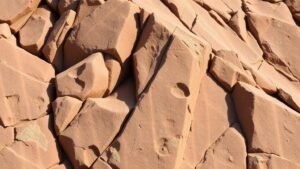Gold Prospecting in Extreme Environments: What You Need to Know
Gold Prospecting in Extreme Environments: What You Need to Know
Gold prospecting is an age-old endeavor, attracting adventurers and treasure hunters alike. But, when it comes to extreme environments–ranging from arid deserts to icy tundras–different strategies and precautions are essential. This article explores the challenges and necessary considerations for successful gold prospecting in these extreme conditions.
Understanding Extreme Environments
Extreme environments are defined by their harsh conditions that can include extreme temperatures, fluctuating weather patterns, and treacherous terrains. Understanding these environments is crucial for any gold prospector aiming for success. The primary extreme environments encountered in gold prospecting include:
- Deserts
- Mountainous regions
- Frozen tundras
- Swamps and marshlands
Challenges Faced in Extreme Environments
Each extreme environment presents unique challenges that can hinder gold prospecting efforts:
- Deserts: Harsh sunlight and minimal water supply can lead to dehydration and heat exhaustion.
- Mountainous regions: High altitudes can affect physical performance, and steep terrains increase the risk of accidents.
- Frozen tundras: Extreme cold can freeze equipment and limit mobility.
- Swamps: Wet conditions can make navigation difficult, and the risk of disease-carrying insects is elevated.
Equipment Essentials for Gold Prospecting
To effectively prospect for gold in extreme environments, specific equipment is necessary to address these challenges:
- Water Purification Systems: Essential for hydration in deserts and remote locations.
- Cold Weather Gear: Insulated clothing and specially designed equipment for working in freezing temperatures.
- High-Quality Navigation Tools: GPS devices and reliable maps are critical for navigation in unfamiliar terrains.
- Mining Tools: Picks, shovels, and metal detectors should be lightweight and durable to withstand harsh conditions.
Techniques for Finding Gold
Different gold prospecting techniques are particularly effective in extreme environments:
- Dry Washing: In deserts, a dry washer separates gold from other materials without water.
- Panning and Sluicing: These traditional methods can be adapted for use where water sources are available, such as in mountainous regions or narrow rivers.
- Magnetometry: In frozen tundras, detecting gold deposits beneath ice can be accomplished using advanced magnetic methods.
Real-World Examples
Successful gold prospecting in extreme environments is illustrated by several notable examples:
- The Klondike Gold Rush (1896-1899): This historical event highlighted prospecting in extreme, harsh climates and led to significant advancements in survival and mining techniques.
- California Desert Prospectors: Numerous modern-day prospectors utilize dry washing and have found substantial gold deposits by effectively navigating the challenges of arid regions.
- Northern Canada’s Tundra Mining: Companies like Agnico Eagle Mines utilize advanced technologies and better equipment to extract gold in the harsh Arctic conditions.
Conclusion and Actionable Takeaways
Gold prospecting in extreme environments demands preparation, specialized equipment, and a deep understanding of the various challenges posed by nature. By investing in the right gear and employing effective techniques, prospectors can significantly increase their chances of success even in the harshest conditions. For aspiring prospectors, it is vital to:
- Research the specific extreme conditions of the region you plan to explore.
- Invest in high-quality, durable equipment tailored to your environment.
- Stay informed about safety practices to mitigate health risks associated with extreme environments.
With the proper preparation and approach, gold prospecting can yield remarkable results against all odds in these extreme environments.


